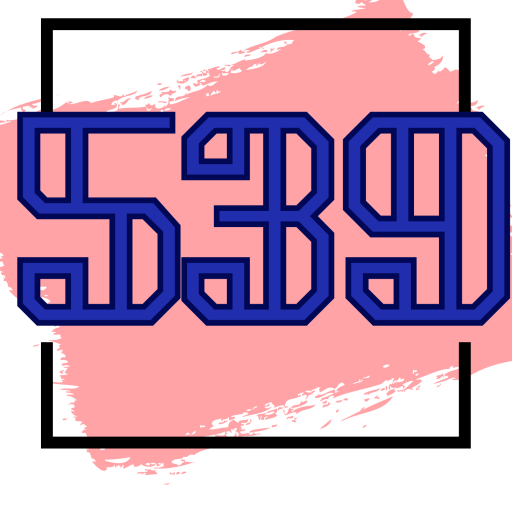Curious about area codes and how they work? In this article, we’ll explore the ins and outs of Area Code 480.
From its history and geographical coverage to current uses and potential alternatives, we’ll cover it all.
Discover the origins and changes over time, the cities and regions covered by this code, as well as the pros and cons of having 480 as your area code.
Stay tuned to learn more about this unique area code and what it means for you.
Understanding Area Codes

Area codes represent essential components of the North American Numbering Plan (NANP), serving as the primary digits within a telephone number to identify distinct geographic areas or specialized services. These codes hold significant importance within the telecommunications infrastructure, facilitating the accurate routing of calls to their intended destinations throughout expansive regions.
What are Area Codes?
Area codes are comprised of three-digit prefixes utilized in telephone numbers to indicate a specific geographic region, central office, or specialized service.
These codes play a critical role as unique identifiers within the telecommunications sector, facilitating the accurate routing of calls to their intended destinations. Each area code is linked to a particular geographical area, enabling the systematic organization of telephone numbers by region.
Typically, area codes are associated with a central office, a physical facility that accommodates telecommunications infrastructure connecting multiple phone lines. This correlation between area codes and central offices facilitates the seamless exchange of communication between diverse regions by establishing a framework for efficient routing and management of phone calls.
History of Area Code 480
The inception of area code 480 in Arizona can be traced back to the year 1999 when it was established through a split from area code 602. This decision was made in response to the growing demand for telephone numbers in the Phoenix metropolitan area. The implementation of this change was overseen by the Arizona Corporation Commission and coordinated by the North American Numbering Plan Administration (NANPA). The primary objective of this action was to cater to the escalating population expansion and the consequent surge in telecommunication requirements.
Origins and Changes over Time
Area code 480 was officially established in 1999 as a direct response to the escalating demand for telephone numbers, leading to a division from area code 602. This necessary split was prompted by the rapid population expansion within the Greater Phoenix metropolitan area, which had surpassed the available telephone number capacities allocated under the existing area code.
The inception of area code 480 facilitated a more streamlined distribution of telephone numbers, enabling enhanced allocation and management of resources within the telecommunications infrastructure of the region. Subsequent adjustments in this realm resulted in the implementation of area codes 623 for the western suburbs and 520 for southern Arizona, thereby further enhancing the efficiency of the phone number distribution framework in place.
Geographical Coverage
The area code 480 encompasses a substantial portion of the Phoenix metropolitan area, encompassing prominent cities like Tempe, Scottsdale, Peoria, Surprise, and Tolleson. This delineation was instituted to accommodate the expanding population and economic endeavors within these areas, facilitating the effective distribution of telephone numbers and services.
Cities and Regions Covered by Area Code 480

The area code 480 encompasses multiple prominent cities within the Phoenix metropolitan area, such as Tempe, Scottsdale, Peoria, Surprise, and Tolleson.
These cities within the 480 area code exhibit diverse and dynamic economic landscapes. Tempe, recognized for being the home of Arizona State University, attracts a lively student population and technology companies. Scottsdale, known for its upscale shopping and dining options, serves as a focal point for luxury lifestyles. Peoria features family-friendly neighborhoods and outdoor recreational activities that appeal to residents of all age groups. Surprise is a swiftly growing city that provides affordable housing choices and community events. Tolleson, celebrated for its agricultural roots, is undergoing a transformation into a contemporary industrial and commercial hub.
The versatile telecommunications services offered by area code 480 cater to the diverse requirements of these bustling cities.
Current Uses of Area Code 480
The area code 480 is presently allocated for a range of telephone numbers and services, encompassing traditional landlines, mobile phones, and sophisticated VoIP services rendered by companies like Nextiva.
Phone Numbers and Services Utilizing 480
Telephone numbers with the area code 480 are utilized across a spectrum of services, spanning from traditional landlines and mobile phones to sophisticated VoIP services such as those provided by Nextiva.
The incorporation of 10-digit dialing has rendered area code 480 an essential element in augmenting communication within the region. Enterprises employing PBX systems have seamlessly integrated area code 480 into their operations, thereby facilitating effective internal and external communication.
The adoption of VoIP services utilizing area code 480 has transformed customer service capabilities, give the power toing businesses to deliver enhanced call quality and innovative features like call routing and virtual phone numbers. This adaptability has positioned area code 480 as a pivotal component in contemporary telecommunications strategies.
Pros and Cons of Area Code 480
The introduction of area code 480 has yielded multiple advantages and disadvantages, reflecting the dynamic expansion and changing telecommunications requirements of the Phoenix metropolitan area.
Benefits and Drawbacks of Having 480 as an Area Code
The area code 480 offers a significant benefit by supporting the rapid growth and telecommunications demand within the Phoenix metropolitan area. This area code serves not only to facilitate local calls within the region but also to enhance communication connectivity for businesses and residents alike.
As the population continues to grow and technological advancements emerge, the demand for telecommunication services has increased, underscoring the importance of area code 480 as a valuable resource. Moreover, the presence of this area code has helped establish a sense of community identity among local residents, fostering a shared connection through a common phone prefix.
Despite its advantages, challenges may arise when managing rate centers and ensuring seamless transitions for customers during area code changes. These challenges require careful consideration and strategic planning to mitigate any potential disruptions in communication services.
Alternatives to Area Code 480

Although area code 480 encompasses a significant portion of the Phoenix metropolitan area, other area codes, including 602, 623, and 520, are also in active use, providing distinct configurations and relief options.
Other Area Codes in the Same Region
The Phoenix region is served by multiple area codes, including 480, 602, 623, and 520. Each of these area codes caters to different segments of the region and provides relief through overlays and splits.
Area code 602 primarily covers the central area of Phoenix, while area code 623 extends to the western suburbs, encompassing locations such as Glendale and Peoria. In contrast, area code 520 serves the southern region of Arizona, including cities like Tucson and Sierra Vista.
These area codes collaborate to efficiently allocate telephone numbers and address the increasing demands of the growing population. Overlays involve the introduction of a new area code to an existing geographical area, facilitating the creation of new numbers without impacting current subscribers. Splits, on the other hand, entail dividing the existing area into two separate codes to accommodate the escalating need for communication channels.
Options for Changing Area Codes
The modification of area codes within a specific region can be accomplished through a variety of methods, which include overlays, splits, and relief plans. These mechanisms are all designed to address the issue of number exhaustion and to facilitate the efficient allocation of telephone numbers.
Overlays entail the introduction of a new area code to the pre-existing geographic area covered by the original code, thereby allowing both codes to coexist within the same region. Conversely, splits involve dividing the area into two or more distinct regions, each designated with its own unique area code. While overlays are generally less disruptive to current subscribers, splits can result in confusion and necessitate alterations to existing telephone numbers. Relief plans typically involve the implementation of new technologies or strategies to increase the capacity of current area codes without necessitating complete code alterations.
Frequently Asked Questions
What is area code 480?
Area code 480 is a North American telephone area code for the Phoenix metropolitan area in Arizona. It covers the eastern and northern portions of the city, including the cities of Chandler, Gilbert, Mesa, and Tempe.
Where is area code 480 located?

Area code 480 is located in the state of Arizona, specifically in the Phoenix metropolitan area. It covers cities such as Chandler, Gilbert, Mesa, and Tempe.
How do I know if a phone number is in area code 480?
If the phone number has a 480 area code, it is most likely located in the Phoenix metropolitan area in Arizona. You can also use an online area code lookup tool to confirm the location of the number.
Is area code 480 the only area code in Phoenix?
No, area code 480 is not the only area code in Phoenix. The city also uses area codes 602, 623, and 520, depending on the location.
Can I keep my phone number if I move to a different area in Phoenix with a different area code?
Yes, you can keep your phone number if you move to a different area in Phoenix with a different area code. This is possible through a process called number porting, where you can transfer your number to your new location.
Are there any special regulations or restrictions for using area code 480?
No, there are no special regulations or restrictions for using area code 480. It follows the same rules and regulations as other North American area codes.



